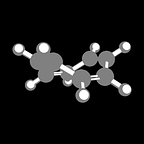High-Voltage Electricity, Knighthood, and Nobel Prizes — oh, my!
The most important subatomic particle in chemistry is discovered by a physicist — yay…
Everyone knows about Johnny Dalton, Antoine Lavoisier, Handsome Robby Boyle, Avogadro, Mendeleev and his biblical beard, etc. — they’re the famous ones, they’re fun to write about, and Johnny Dalton sounds like someone you’d blaze it up with. However, there are several others whose contributions are just as important that usually don’t make the cut in terms of celebrity: Justus von Liebig, Joey Gay-Lussac, Jönny Berzelius to name a few. While I think we all grasp the importance of the electron (I’d say that understanding the nature of electrons will give anyone a basic understanding of roughly 90% of chemistry), few could name the dude credited with its discovery.
I think I know the reason why: the dude was a physicist. As much as I hate to admit it, this event marked a turning point: from this point on, physics became inextricable from chemistry. Alluding to my previous statement, understanding the nature of electrons for specific element will absolutely help understand the reactivity of that element — understanding the nature of electrons requires some knowledge of physics. As a diehard organic chemist, it hurts me say all this… it really does.
All right—let’s get to the meat and potatoes. Science awaits!
As happens in this age of discovery, improvements in scientific equipment typically precede critical discoveries. In this case, the Geissler tube is the culprit. Playing with electricity had supplanted the chemist obsession with fire (with electricity, potassium was discovered, and potassium explodes on contact with water), and now gas discharge tubes were all the rage. If you’ve seen a neon sign, you’ve seen a gas discharge tube — it is a sealed tube of a gaseous element with electrodes. Applying a high voltage across the electrodes (“applying a voltage across” something is just a fancy way of saying “hooking it up to a battery”) makes the gas emit light. Early experiments were obsessed with the colored glow and subsequently produced a crap-ton of confusing research. While it was quite fascinating and beautiful, scientists (read: smart dudes like Michael Faraday) simply didn’t understand what they were seeing: they needed to perform more experiments, and to do that, they needed better equipment.
